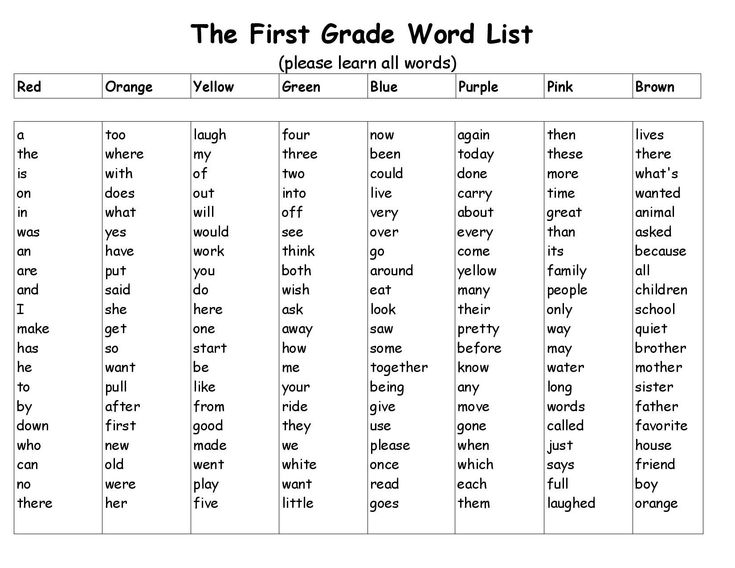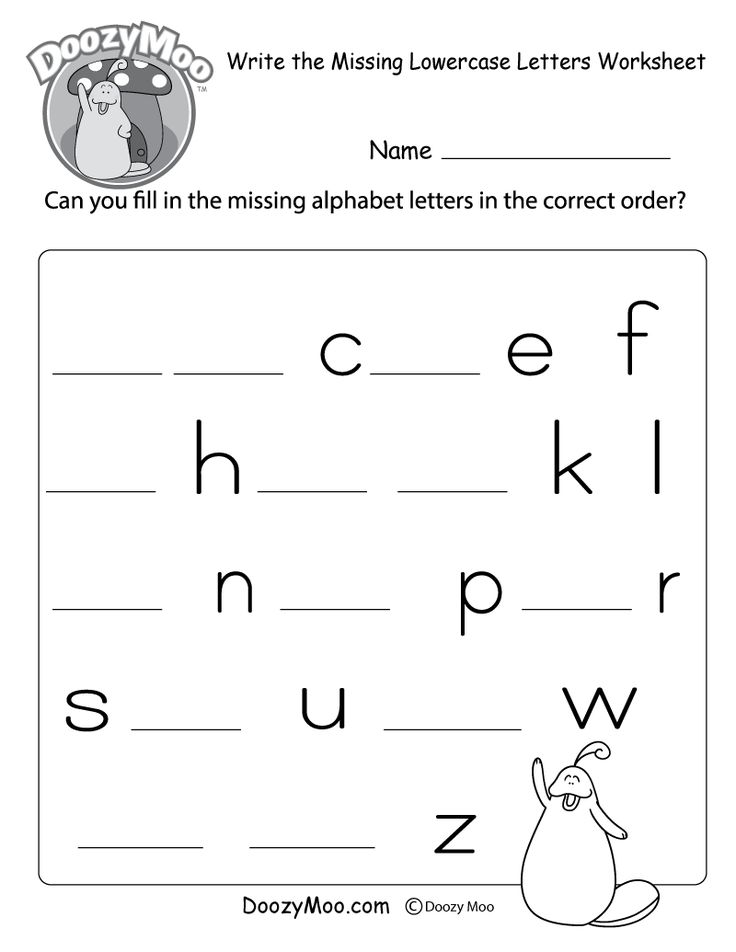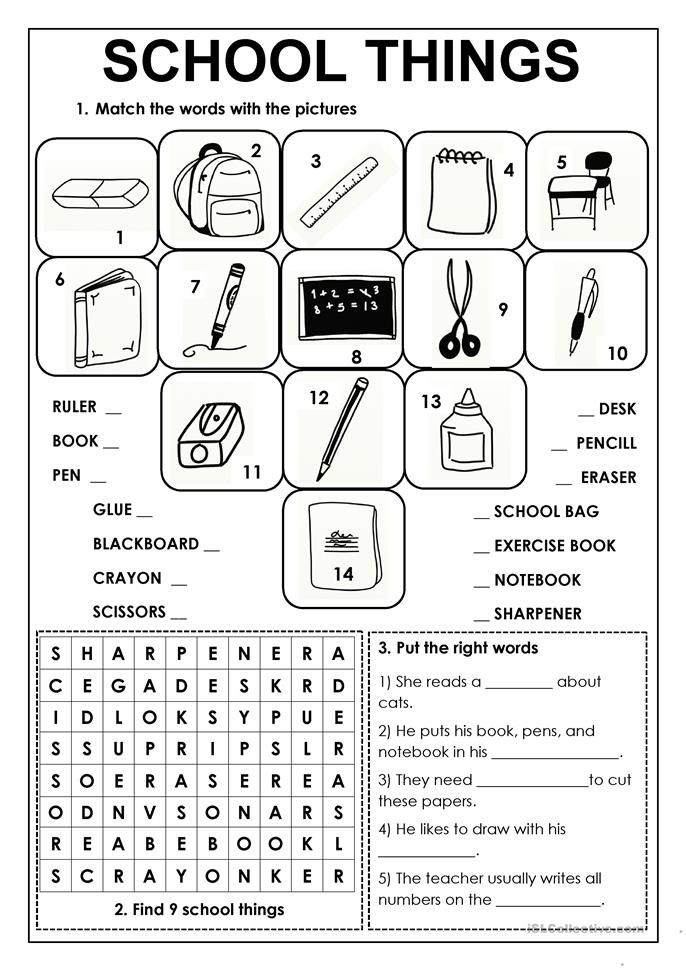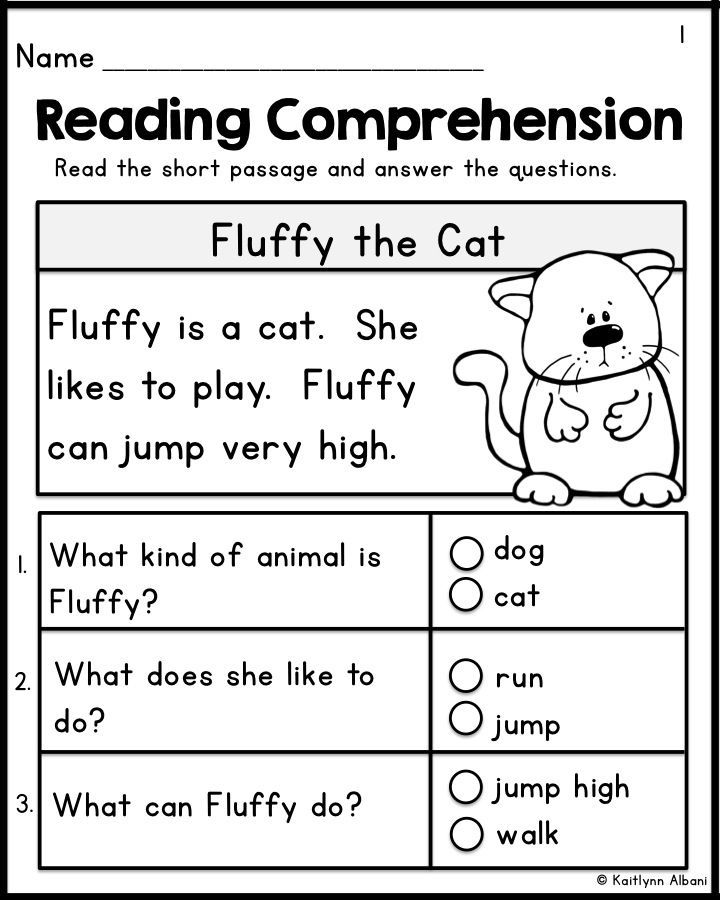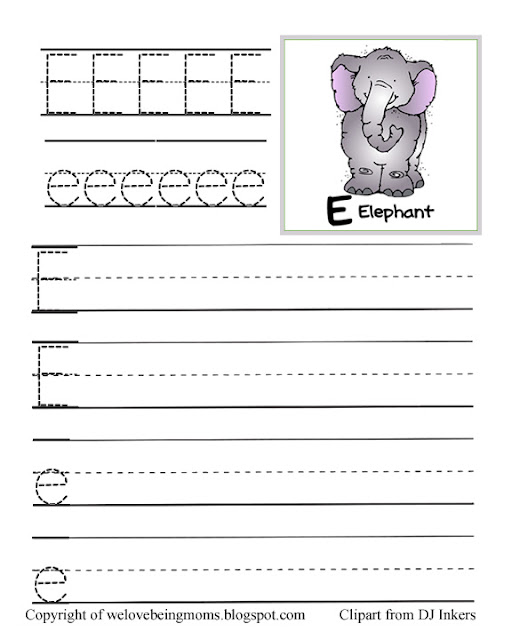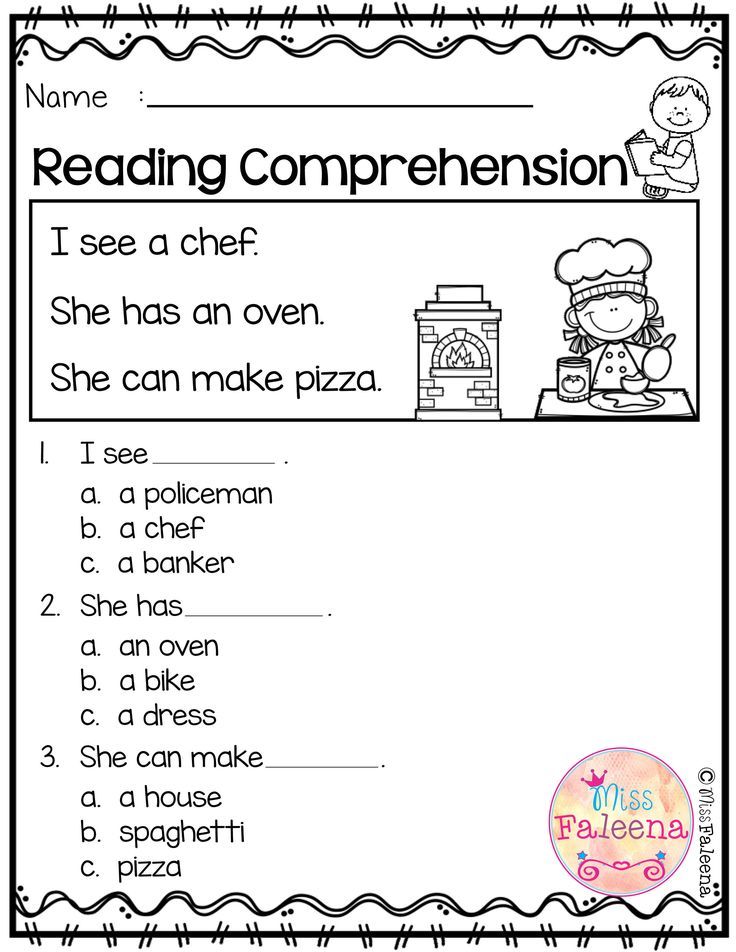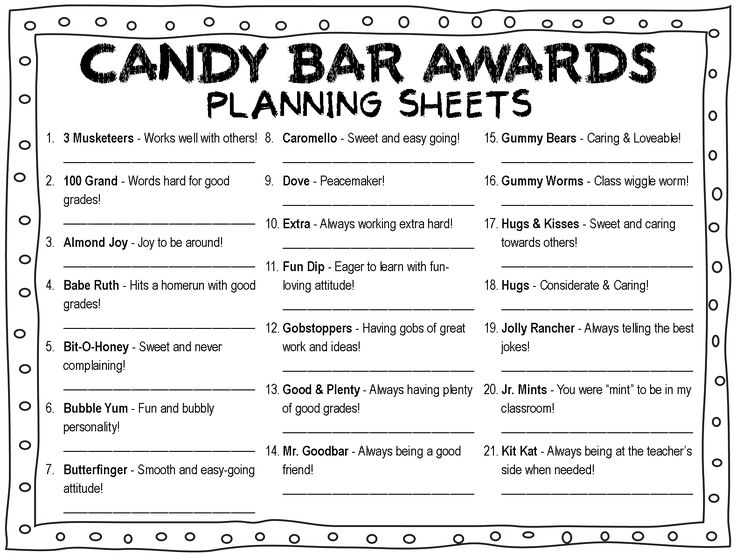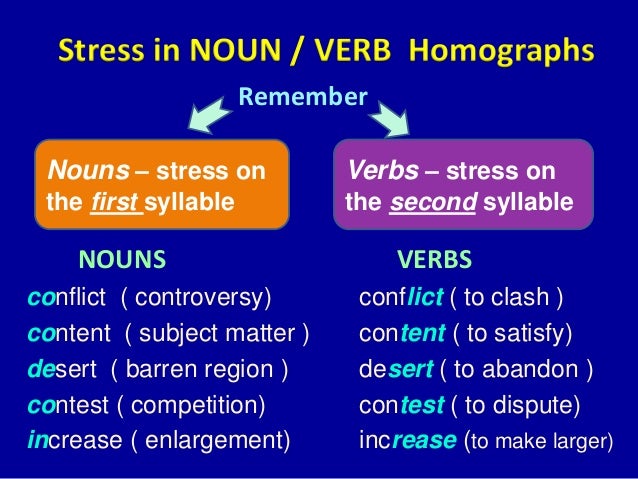Morning meditation for kids
5 Best Meditation Videos for Kids
Share on Social Media
Meditation and mindfulness are great practices for kids. They can help children adapt to stress, anxiety, and other frustrating situations. But many kids need help focusing and calming their mind. Guided meditations are great to help your kids with their mindfulness practice, however, you can’t quite sit them down with a meditation written for adults and expect success. Fortunately, there are plenty of guide meditation videos for kids available. These videos treat meditation like a story or otherwise design the guided imagery to keep your children engaged. These meditation videos for kids are perfect to help your child relax before bed or nap time or just to teach them the principals of meditation and mindfulness. Check out our recommendations below.
Balloon Guided Meditation for Kids
This 6 minute guide relaxation for kids from Peace Out features the gentle voice of Jamie paired with cheerful illustrations. Jaime is great at taking the principles of mindfulness and guided relaxation and making it accessible for kids. This meditation features a red balloon that takes the kids on a flying trip through a beautiful countryside.
Their meditation videos for kids are perfect for a quick morning or afternoon meditation session.
Breath Meditation for Kids
If your child is an older kid or you’re looking to introduce your son or daughter to more traditional guided meditations, this 5 minute video from the Meditation Channel is great. This meditation focuses on the breath, teaching your child to turn their attention inward and creating good habits for future meditation. While this video doesn’t feature fancy music, it’s very accessible for children and allows them to really focus on their breath.
Guided Gratitude Meditation for Kid’s
This guided meditation video for kids is a story that focuses on gratitude. This story is less of a traditional meditation, but instead a relaxing story that teaches children about being grateful for what they have or who they are. It does guide your child to breath in and repeat gratitude mantras. At 20 minutes long, this video can be listened to at any time of day, but it’s particularly good for bedtime. Cory’s voice is very relaxing and can help lull your child to sleep.
The Butterfly Meditation for Kids
Here’s another guided meditation great for elementary school aged kids. Breethe offers a variety of guided meditation videos for all ages and even has an iOS app.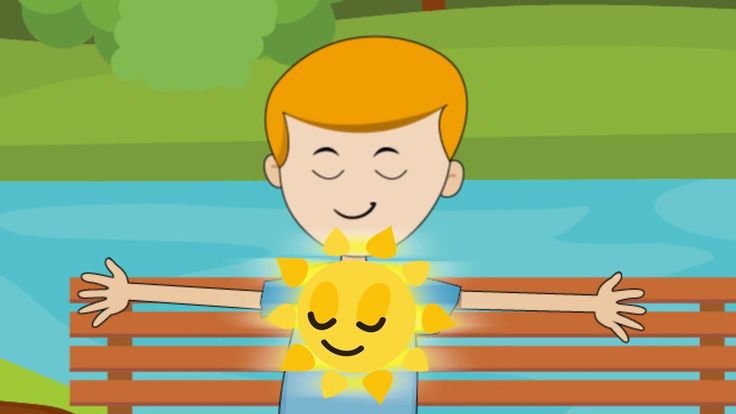 This meditation starts out with a focus on the breath and continues with the visualization of a butterfly to guide your child through a body scan meditation. At 7 minutes long, this meditation is great for any time of day.
This meditation starts out with a focus on the breath and continues with the visualization of a butterfly to guide your child through a body scan meditation. At 7 minutes long, this meditation is great for any time of day.
Forcefield of Protection Guided Meditation for Children
New Horizon makes a ton of meditations specifically for kids. From story meditation to relaxation exercises to help with stress and anxiety, they offer something for every child. This meditation is for the Forcefield of Protection, which is great for nervous or anxious children. In visualizing a protective forcefield of light, it helps give kids confidence to deal with tricky situations that make them nervous.
If you enjoy this guided meditation or prefer to listen to MP3 you can purchase their guided meditations for kids on Amazon or iTunes.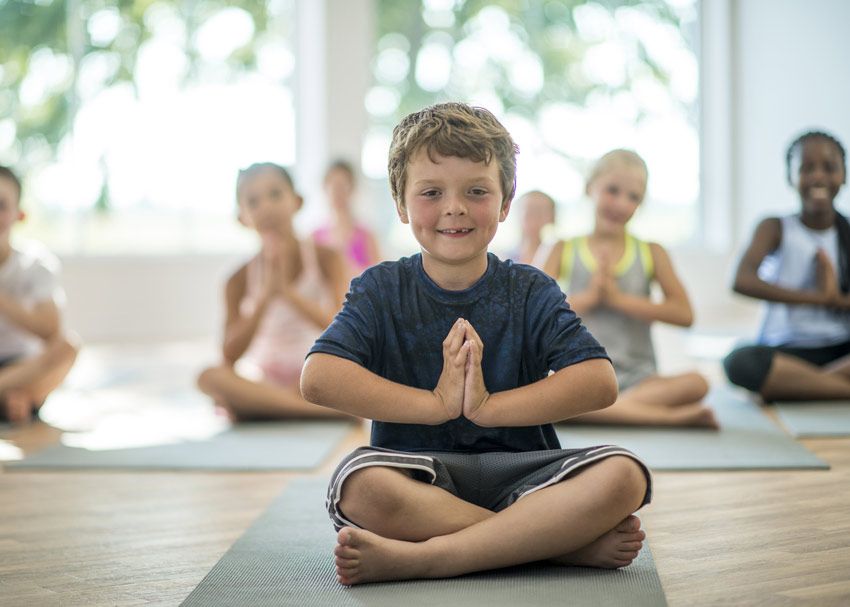
Save on Pinterest
Looking for more ways to teach your children about meditation? Check out these DIY meditation jars.
Help your children practice mindfulness with yoga by using these yoga DVDs for kids.
Encourage their practice with these yoga and meditation gifts for kids.
Share on Social Media
Guided Meditation for Kids: 50+ Free Relaxation Scripts
Guided meditation has so many benefits for kids. Using a meditation script is a relaxing and spacious way to encourage mindfulness with your child. From full body relaxation exercises to fun adventures like a magic carpet ride, your child will reap countless benefits from this special bonding time with you.
Meditation is one of the best mindfulness tools you can equip your child with. It helps kids on a big-picture level when it comes to managing stress and anxiety. And overall mindfulness can head off stress before it turns into a cortisol event (or an all-out tantrum for little ones).
Here we’ll cover the benefits of meditation, why guided meditation is a great starting point for kids, how to get started, and you can get 50+ free guided relaxation scripts to practice with your child.
Table of contents
- What is Guided Meditation?
- The Benefits of Guided Meditation for Kids
- Guided Meditation for Kids
- Links to Sample Meditation Scripts
- How to Use a Guided Meditation Script with Your Child
- Get Started with Your Child
In guided meditation, rather than practicing in silence, one is led by another person’s voice. For instance, a parent can read a guided meditation script to their child before bedtime. Being guided can help the meditator focus, prevent their mind from wandering and offer them an entirely new experience.
Nearly every religion (Christianity, Buddhism, Hinduism, Judaism, Islam, etc.) has a tradition of using meditative practices. Meditation has been used for thousands of years to help relieve stress, anxiety, and the feeling of being out of control or overwhelmed. It also helps improve self-awareness, empathy, and mindfulness.
Meditation has been used for thousands of years to help relieve stress, anxiety, and the feeling of being out of control or overwhelmed. It also helps improve self-awareness, empathy, and mindfulness.
You don’t need lots of experience—just focusing on your own out-breath from start to finish is a beginning. Feel the sound, the sensation. Trust your intuition for knowing what’s best for your child, and when you practice mediation together, that connection will grow stronger.
Lorraine Murray, author of Calm Kids: Help Children Relax With Mindful Activities
During a meditation session, you may focus on breathing, noticing sensations in your body, relaxing, visualizing, and engaging your senses. This mind-body practice provides benefits that last far beyond the meditation session.
The Benefits of Guided Meditation for KidsThe benefits of meditation are numerous – both at home and in the classroom. And good habits early on can lead to a lifetime of well-being.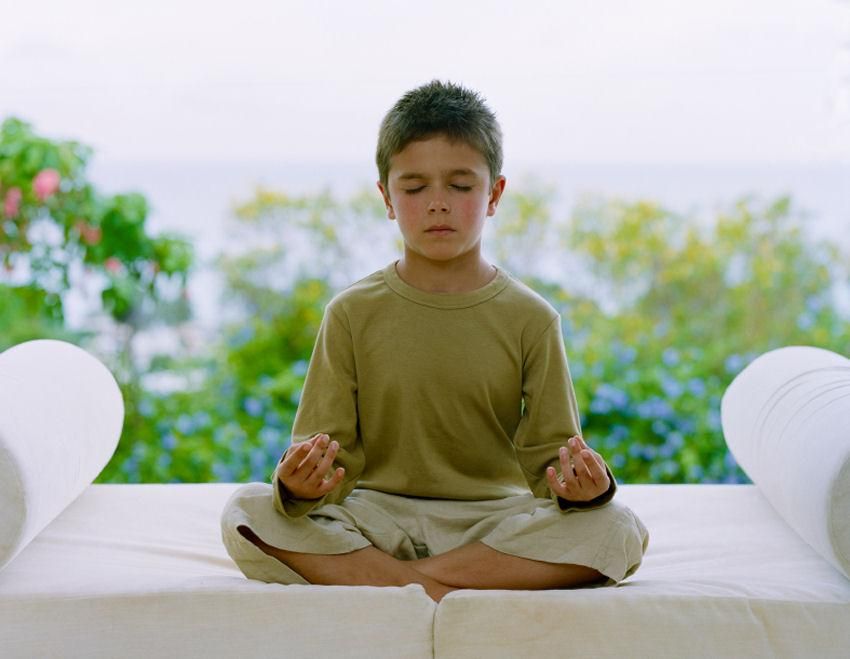 Meditation can
Meditation can
- improve a child’s positive thinking, happiness, and empathy
- help reduce pain and headaches
- improve self esteem
- help children fall asleep faster, and improve sleep quality
- lower cortisol levels, resulting in decreased stress in the body
- help kids focus and concentrate – In a 2019 study, high school students who practiced meditation displayed better attention spans than students who didn’t.
- encourage the use of imagination during guided meditation and help them access their natural creativity both during and after the session
- connect kids with their own emotions as well as the emotions of others, leading to more compassion and a keen sense of emotional intelligence (source)
- improve active listening skills
Some studies have found that kids who are taught to improve their learning or thinking process early on are lifelong better learners and become more resilient.
A 2014 JAMA Internal Medicine study reviewed mindfulness studies in relation to psychological stress and well-being.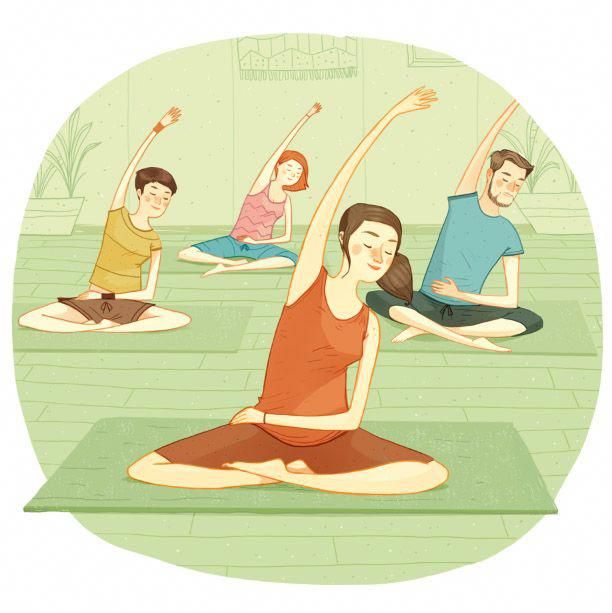 The analysis included 3,500 participants and compared mindfulness-based stress reduction, transcendental mediation, or mantra-based techniques, and tracked participants on a variety of outcomes — like anxiety, depression, and stress scores.
The analysis included 3,500 participants and compared mindfulness-based stress reduction, transcendental mediation, or mantra-based techniques, and tracked participants on a variety of outcomes — like anxiety, depression, and stress scores.
They found these practices moved the needle on anxiety and depressive symptoms to a degree “comparable with what would be expected from the use of an antidepressant in a primary care population.”
While sitting still in lotus pose for more than a few minutes might be challenging for an antsy child, they tend to love guided imagery and stories. They can take center stage in a self-esteem building adventure or relax into a deep breathing exercise.
Guided Meditation for KidsBedtime used to be a battle with our 5-year-old daughter. Since we tried the Lazy River meditation, she’s a completely different kid! Instead of getting hyper or negotiating her nightly routine, she’s calm and seems almost happy to go to bed now.
Marisol R., parent
A July 2021 study found that elementary school kids who practiced mindfulness training slept an average of 74 extra minutes a night.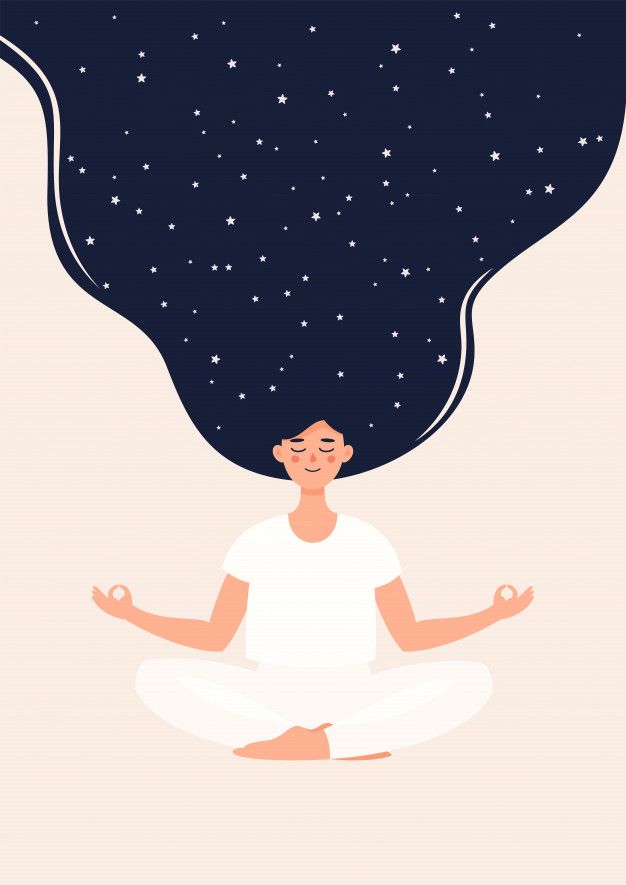
Our guided meditation scripts for kids have been a much loved part of Green Child for 11 years now. These scripts help kids and teens to improve self-esteem, relieve stress and anxiety, find peace in the present moment, manage anger, and develop an overall positive mental attitude at school and at home.
You can find our ever-growing library of guided meditation and guided imagery scripts for kids all in one place. These calming meditations are written exclusively for Green Child readers by Mellisa Dormoy of Shambala Kids. (They are not available for recording or republishing.)
When you subscribe below, you’ll get full access to the library where you can browse the topics to see which guided meditations will most benefit your child.
Choose a guided imagery script and read it to yourself to find the rhythm before you read it to your child. Once you’re ready and your child is relaxed, simply read in a calm voice, pausing to let the words and feelings sink in.
Here you’ll find some examples of the different types of relaxation scripts you can choose from when you have access to the full library of 40+ scripts.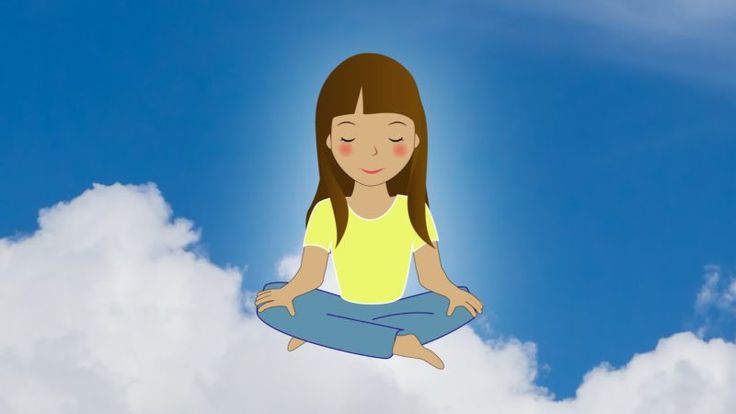 (These links are to scripts that appear on our website. When you have the library (or guided meditation central, as some of our readers lovingly call it, you can print or read from your device with no ad breaks.)
(These links are to scripts that appear on our website. When you have the library (or guided meditation central, as some of our readers lovingly call it, you can print or read from your device with no ad breaks.)
Watch how your child relaxes and engages their imagination while they enjoy these calming scenes. The more often you read a relaxation script, the more easily your child will relax and concentrate.
How to Use a Guided Meditation Script with Your ChildMeditation works as a stress management tool by switching off the fight or flight response to stress and allowing the body to switch on the relaxation response. When children meditate, they become less reactive to stress.
Dr. Alina Olteanu
Many parents use these scripts at bedtime to help their child fall asleep peacefully. We always get a few emails saying, “My kid was asleep before we even finished the breathing part!”
Other scripts are more suited to morning readings to help them start their day off calmly and confidently.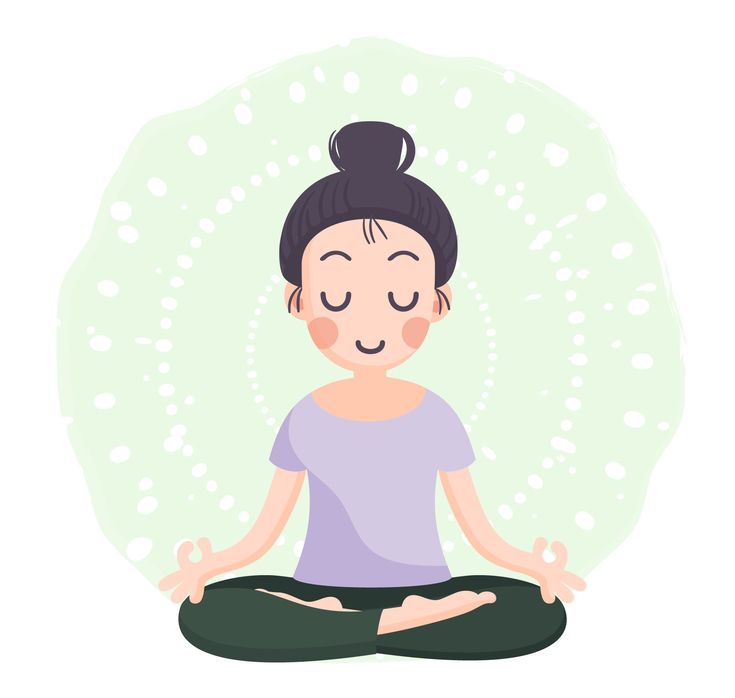 As you browse through the library, you’ll get an idea of which ones are best for your child. Then…
As you browse through the library, you’ll get an idea of which ones are best for your child. Then…
- Choose a script. Read it to yourself first to find the rhythm.
- Make sure your child is comfortable, relaxed, and calm.
- Choose a time when you have your child’s attention and they are open to a new experience.
- Find a place free from distractions or loud noises.
- Read the script to your child in a calm, soothing voice, pausing often. Notice how your child relaxes and engages.
- If your child is still awake when you’ve finished, allow them to reflect and share their thoughts with you.
Children should not be forced to meditate, and if it seems your child isn’t in the right place to meditate at that time, you can move on to another activity and try again later, or on another day.
You may choose to begin with shorter meditation sessions and increase as their ability to focus and meditate grows.
Get Started with Your ChildKids need the adults around them to behave in ways they can model, says Murray.
Lorraine Murray, author of Calm Kids: Help Children Relax With Mindful ActivitiesKids also need to hear and feel that their adults know them well enough to adapt meditation to their needs and preferences, which can change day to day.
When can kids start meditating? Our own experience has shown that even toddlers can follow along a relaxing story or at least snuggle up and fall asleep to the sound of mom or dad reading a guided imagery script.
More formal studies show the magic age to be around four years old. By that time children are more aware of their own thought processes.
“It’s almost as though meditation was designed for kids,” says Headspace co-founder and former Buddhist monk Andy Puddicombe. “They just ‘get it’ – there is this elasticity and freedom in their minds which allows them to be present in the moment and free from any external thoughts or pressures. By introducing meditation and mindfulness at an early age, not only can we build on this and help nurture their mind development, but we are also making meditation simple and accessible. ”
”
You know your child better than anyone. You can always try and if they aren’t receptive, let it go for now and try again in a few months.
Green Child Magazine’s guided relaxation scripts for kids are a great place to begin with your child. Parents praise them for helping calm and center their little ones, and some report that reading a meditation is the best way to get their child to fall asleep at night.
Teachers and therapist often share how these scripts have positively impacted their students and patients.
I am a therapist and needed to help a child suffering, and to do so quickly. I was able to pull up Peaceful Retreat. This precious boy had been suffering with a terrible weight, unable to focus on school, unable to sleep, he stated he was starting to ‘feel crazy’. His distress was big and painful. We used the meditation, and when he opened his eyes, he stretched, looked around, then looked me in the eye and said, ‘I feel so much better.’ His shoulders loosened and his facial muscles relaxed.
Katherine W., Therapist & Social WorkerTo be able to pull that up free of charge, right from the web…it saved him and his family from hospitalization.
Mindful meditation can give children the tools they need to recognize their own signals of stress and bring themselves back into balance. Children are curious and willing to try new things. Meditating with a wiggly pre-schooler may not look exactly as you envision, but your child will benefit, as will you!
This article was originally published in 2017 and was updated in Dec 2022.
Related Articles
Mindfulness Exercises to Help Kids Sleep
Want Happier, Calmer Kids? Simplify Their World
Why Your Child Might Benefit from a Montessori Floor Bed
Create a Calm Bedroom for Your Child with Feng Shui
How to Choose an Organic Mattress
Kids Who Spend More Time in Nature Become More Mentally-Sound Adults
- Author
- Recent Posts
Green Child Magazine
Since 2010, Green Child has published an award-winning publication devoted to natural parenting and conscious living.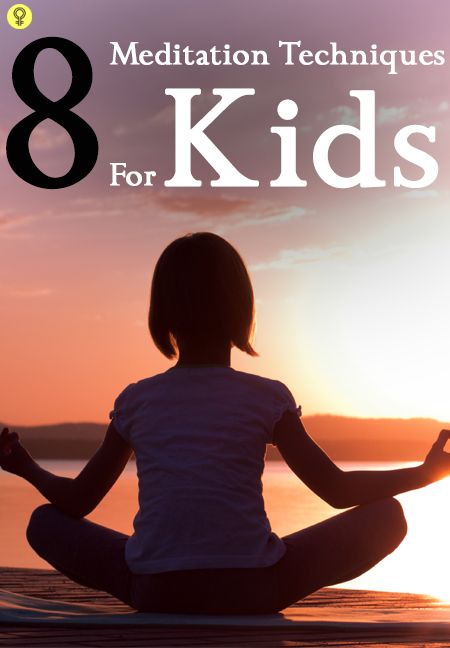 Noted as “good for a green mama’s soul,” Green Child has grown into a resource valued by parents who care about bringing simplicity, compassion, social responsibility, and instinctual intelligence back to parenting.
Noted as “good for a green mama’s soul,” Green Child has grown into a resource valued by parents who care about bringing simplicity, compassion, social responsibility, and instinctual intelligence back to parenting.
Latest posts by Green Child Magazine (see all)
A Parent's Guide to Helping Their Children
Today's youth experience anxiety and stress. Much more than it should. According to recent statistics published by the American Academy of Pediatrics,
Up to 30 percent of children and young adults will experience an anxiety disorder in their lifetime.
Parents and other caregivers should teach our children good stress-reducing habits and introduce them to mindfulness activities that help them grow, support mental health, develop self-control and self-esteem, and reduce anxiety. nine0003
One of the best ways to do this is through meditation. We cover everything you need to know about meditation for kids, including what the practice looks like, how to teach it, and why it works.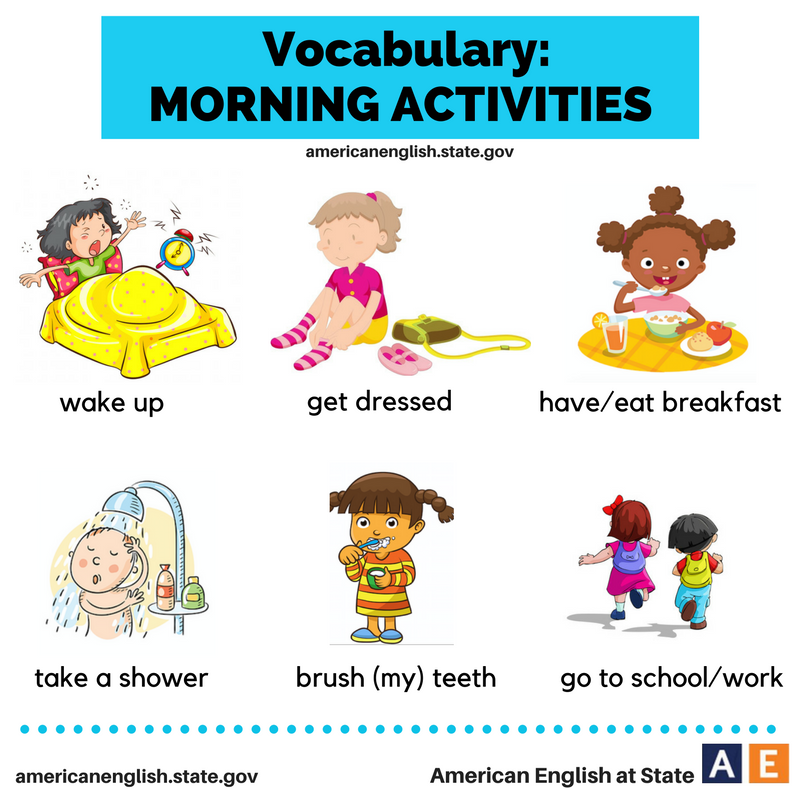 While teaching mindfulness to children may seem like a daunting task for parents or teachers who want to improve the well-being of their children, once you understand what mindfulness and meditation practice is, everything becomes much easier.
While teaching mindfulness to children may seem like a daunting task for parents or teachers who want to improve the well-being of their children, once you understand what mindfulness and meditation practice is, everything becomes much easier.
Overview: Meditation for Kids
In some ways it is not surprising that children develop stress disorders early. We live in a sensory world. There are real threats, and the unknown can be scary. Today's children suffer from attention spans and an inability to concentrate while studying, in the classroom, or even at play.
It is tempting to think that you can protect your children from all the fears and stresses throughout their lives; the best answer is to explain how to deal with difficult times. Children's meditation can help them with this. nine0003
Establishing a solid meditation practice at an early age is a good intention for your children and for yourself as parents and educators.
Whether it's deep breathing exercises, guided meditations, sleep stories, yoga, or any other mindfulness-based intervention, there's no doubt that children of all ages will benefit from mindfulness training from an early age.
Diagnosis of anxiety and behavioral disorders in children has increased dramatically. nine0007
Now let's define what meditation is?
For both children and adults, meditation is a practice that can bring great joy and comfort to your life. Although it can be difficult to define meditation in one sentence, in general it can be said that meditation is a mind-body practice that trains mindfulness and focus.
There are many benefits to meditation. For example, it helps to improve concentration, calm frayed nerves, relieve stress, help with self-comfort, and promote happiness. All these benefits are available to both children and adults. nine0003
Can children meditate?
Yes! Although a child's meditation will not look the same as an adult's meditation, the basic foundations of the practice remain. Children, for example, may benefit from guided imagery. Their duration may be shorter. And, of course, it is very important to choose meditation for the child.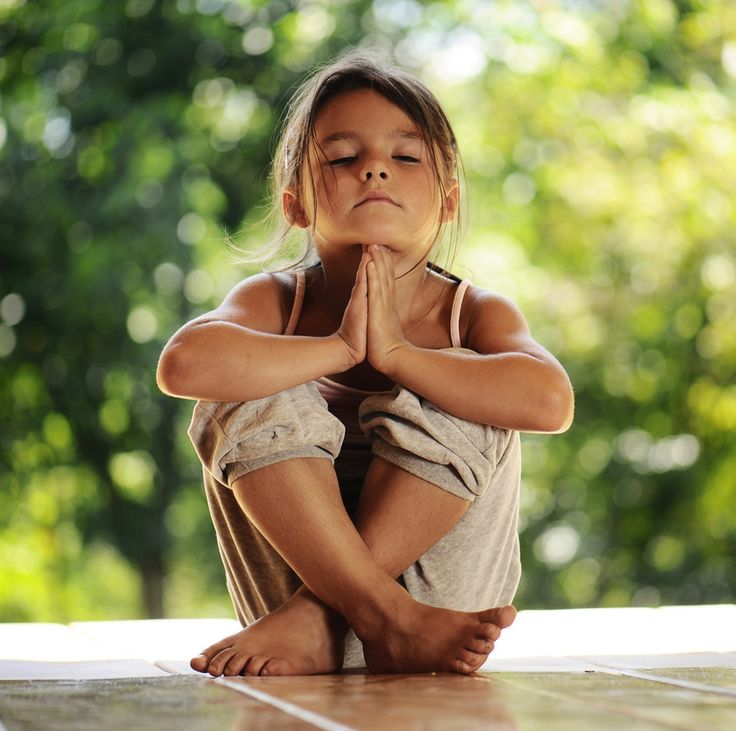 Some, for example, do not tolerate sitting meditation for more than a few minutes very well. However, they are fine with meditating while walking outdoors, mental painting, telling sleep stories in a soothing voice, or even listening to audio recordings as guided meditations. nine0003
Some, for example, do not tolerate sitting meditation for more than a few minutes very well. However, they are fine with meditating while walking outdoors, mental painting, telling sleep stories in a soothing voice, or even listening to audio recordings as guided meditations. nine0003
Mantra meditation can spark curiosity in older children as it requires
extra attention and patience, but can be a great option if your children are willing to dive deeper into
Why is meditation important for children?
Up to 30% of young people develop anxiety disorders.
- American Academy of Pediatrics
Children are not immune from the stresses of life. In recent years, the number of diagnosed anxiety and behavioral disorders in children has increased dramatically. These include attention deficit disorder (ADD), attention deficit/hyperactivity disorder (ADHD), and obsessive-compulsive disorder. First, it tells us a few things as our understanding of how conduct disorders manifest in children grows. Second, rates of diagnosis are rising as children are tested and diagnosed with these disorders. In other words, today's children are not necessarily more stressed than children of the past. However, it also tells us that children are more prone to anxiety and stress than we previously thought. As parents, we must be vigilant and help our children cope with stressful situations in life and instill self-care in their lives from an early age. nine0003
Second, rates of diagnosis are rising as children are tested and diagnosed with these disorders. In other words, today's children are not necessarily more stressed than children of the past. However, it also tells us that children are more prone to anxiety and stress than we previously thought. As parents, we must be vigilant and help our children cope with stressful situations in life and instill self-care in their lives from an early age. nine0003
Can meditation help children cope with stress?
Yes. Fortunately, meditation can help calm the symptoms associated with problematic disorders. Children's meditations have the same effects as adults' practice. Even short, simple meditations for beginners can have amazing benefits. A recent study in the Journal of Positive Psychology found that just 15 minutes of meditation has the same positive impact as a full day of vacation. nine0003
Meditations for children
-
Guided Meditation for Children: Live or recorded guided meditation during which the instructor gives instructions for the meditation session.
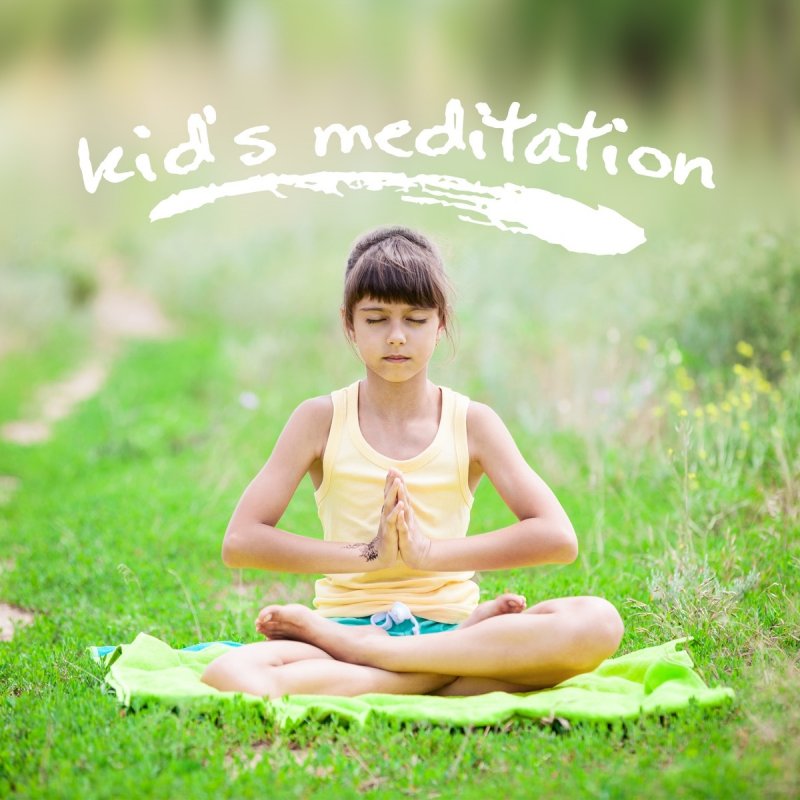
-
Sleep Meditation: These meditations are gentler and more soothing. Often, meditations are accompanied by music, they calm the mind and prepare the body for sleep.
-
Mindfulness Meditation: Meditation and mindfulness just go together. Mindfulness meditation means awareness (full attention) to the present moment instead of focusing on the past or the future. nine0003
Benefits of meditation for children
Children can learn through meditation:
1. How to breathe correctly.
Many people learn to breathe incorrectly (shallow) in childhood. Meditation can help develop proper breathing skills. Deep breathing helps focus and relax, which teens, children, and even young adults may not be aware of and express in their own way.
2. How to deal with stress and anxiety. nine0055
Meditation helps to re-adjust the mind and calm the hectic thoughts and harsh, stressful emotions.
3. Better focus.
Mindfulness meditation, in particular, can be helpful in improving concentration. This is because staying in the present requires significant attention and awareness.
4. How to calm down and regulate difficult emotions.
Children often experience strong emotions and do not know how to calm down. Meditation helps center the mind and provides a soothing cushion for difficult emotions. If your child loves music, consider downloading a meditation that includes children's music. The audio recording can be turned on before bedtime or in the morning when the child is getting ready to start their day. nine0003
5. How to sleep better.
If you want to use bedtime meditation for kids, this is a great idea. Children's bedtime meditation can help alleviate some of the problems they face while resting. Many children feel too anxious, scared, or energetic to properly prepare for bed at night. Meditation before bed is a great remedy for a wandering mind.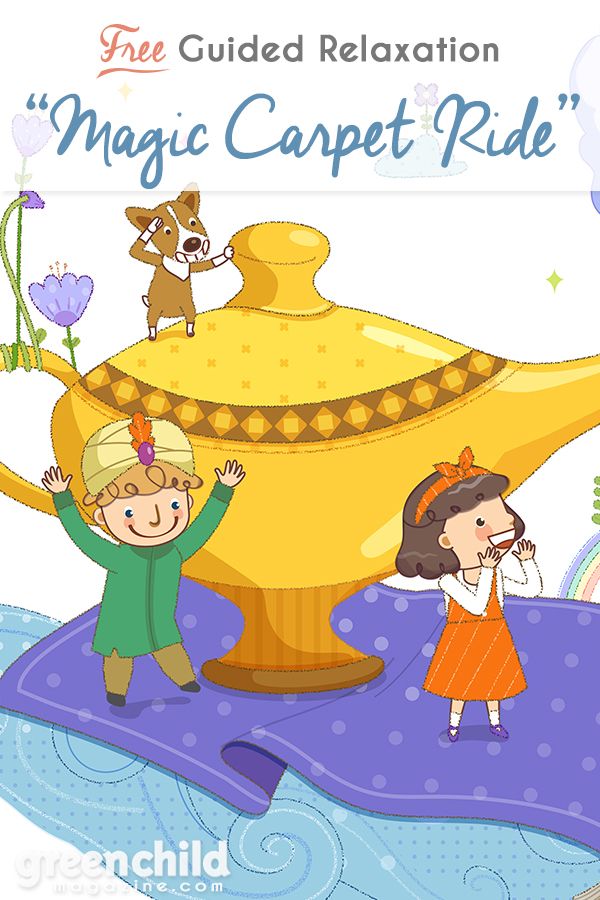
Teaching children guided meditation is easier than you think
There is no wrong way to teach a child to meditate. But here are some tips:
1. Start small. Even five or ten minutes of meditation is better than no meditation at all. Before the start of the school day, sit in a quiet place (perhaps even in the car when you drive the children to school) and dedicate time to meditation practice.
2. Try family meditation. Meditation can be a wonderful experience for all family members, including children. This is a great way to bond with your child and build more trust and intimacy. nine0003
If you have never meditated before, ask an instructor for a quick start session.
3. Don't worry about the details. It is natural for someone to giggle, move, or be distracted and restless in body and mind. This practice is primarily aimed at manifesting itself. They may also fall asleep.
Meditation for Children: Frequently Asked Questions
At what age should you start meditating?
You can start mindfulness meditation or short, informal meditation sessions with your children at any time.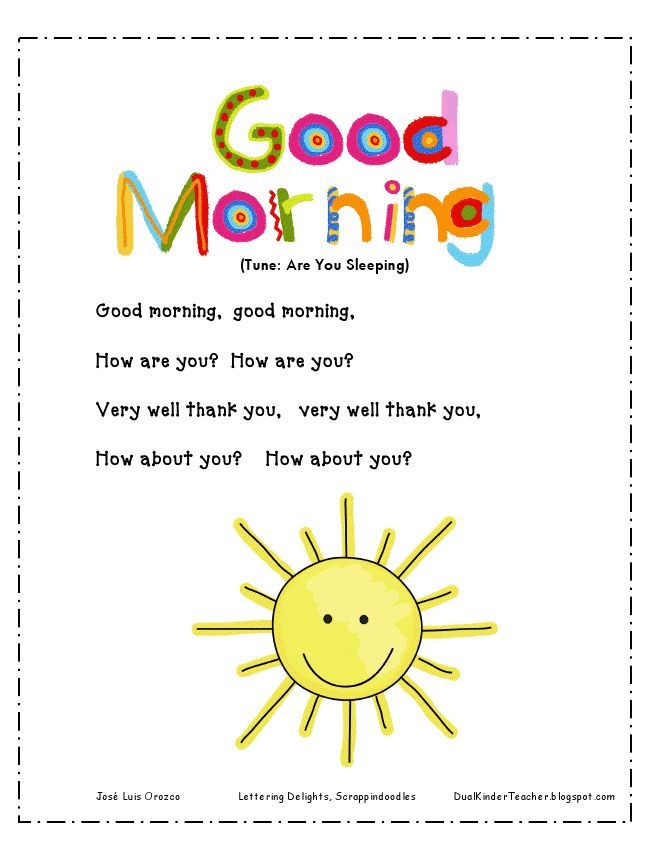 As a general rule, seated meditations are best for children six years of age and older. nine0003
As a general rule, seated meditations are best for children six years of age and older. nine0003
How do you meditate as a family?
Here is a quick family meditation: Find a quiet place. Sit on the floor and assume a comfortable, mindful posture. Straighten your back and close your eyes slightly. Set a timer for two to five minutes. Focus on taking a deep breath: Inhale... and exhale... Inhale... and exhale... Inhale... and exhale... until the timer runs out. Breathing exercises are the best way to introduce children to meditation - they give them the opportunity to focus and concentrate. nine0003
Does meditation help in studies?
Yes. Meditation has been proven to help children focus better and be less distracted. It helps to improve attention during classes and while studying. Meditation can also improve memory and provide mental and physical support to children as they learn. You can even teach your kids to meditate during their lunch break or before exams and tests at school.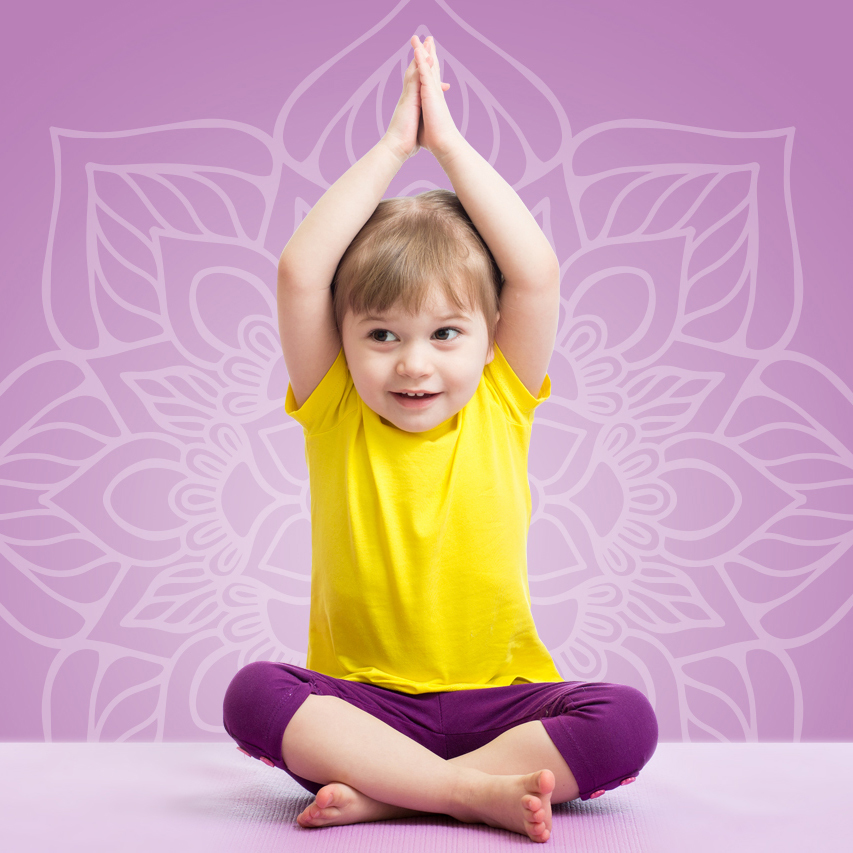
Can babies meditate? nine0055
While you probably won't be able to get your little one to sit up during a full meditation, you can work on focus together. Try focusing on one object (like a ball) for 30 seconds. Look at it with your child and describe everything about it (color, shape, size, texture, smell...). This is a great mindfulness meditation for toddlers.
What tools, applications and other methods can be useful for children?
Meditation is not the only holy grail for helping children deal with the stresses of the world - there are a whole range of ways to become more mindful and relax. Yoga, painting, singing, pottery, and being in nature (such as forest bathing or swimming) are fantastic tools to support child development.
For apps, check out meditation apps like Headspace, which offers a library of mind-guided programs and meditations with fun illustrations that young children might find interesting. nine0003
Resources for Anaachan Meditation
Meditation Vika
Meditation for chakras
Meditation techniques
Meditation of Body scan
Management Meditation for children
Meditation
Up to 30% of young people will suffer from anxiety disorders
Anxiety and depression in children: Find out the facts | CDC
The impact of 15 minutes of meditation versus one day off
Morning Meditation: Why morning is the best time to meditate
Are you thinking about doing morning meditation? You really should do this, it's the best way to start the day, and here's why!
The perfect start to your day
What is the first thing you do when you get out of bed in the morning?
Flick through the phone a little? nine0003
Would you like a cup of coffee?
Straight to the shower?
If you've ever imagined yourself as one of those people who can wake up and start their day slowly and calmly, without rushing through the clock or feeling the stress of the day ahead, morning meditation might be just what you're looking for.
Benefits of morning meditation
Why meditate?
If starting meditation seems difficult, don't worry - anyone can do it! nine0003
In general, meditation is simply the time you take to breathe deeply, focus your thoughts, and observe your feelings. And while there are guides to meditation, there really isn't a "wrong" way to meditate, as long as you try your best.
Of course, as you delve deeper into simple meditation as a practice, you will be able to discover much more. For now, we'll focus on the basics.
Let's first talk about why meditation is beneficial. Here are 7 main reasons:
-
Reduces Stress: Meditation has been shown to lower levels of cortisol (the main stress hormone).
-
Improves Memory Loss: In one study of a group of people with memory loss, participants assigned to meditation practice had increased blood flow to the parietal and frontal lobes.
-
Improves attention span
-
May lower blood pressure
-
Improves sleep
nine0080 -
Pain relief
-
Mental health support
When is the best time to meditate?
Self or guided meditation can be done anytime, anywhere.
However, morning is probably the best time to meditate.
Why?
In the morning, your mind is likely to be at its most calm. Nothing stressful has happened yet since you just woke up and your mind probably hasn't faced any difficult issues yet. nine0003
Also, since you have just woken up, it is unlikely that you will fall asleep during your morning meditation. However, if you do fall asleep, turn on morning meditation music to make the process more alive. Music with positive energy can really help you concentrate better during meditation.
How meditation works
How does a simple meditation exercise work?
In principle, if you are a beginner, your morning meditation should be just a short, concise moment in order to focus, focus and calm your mind and body. nine0003
There are no hard and fast rules. It all depends on the space, tools and time you have.
Let's talk about time first.
Most of us don't have much time in the morning.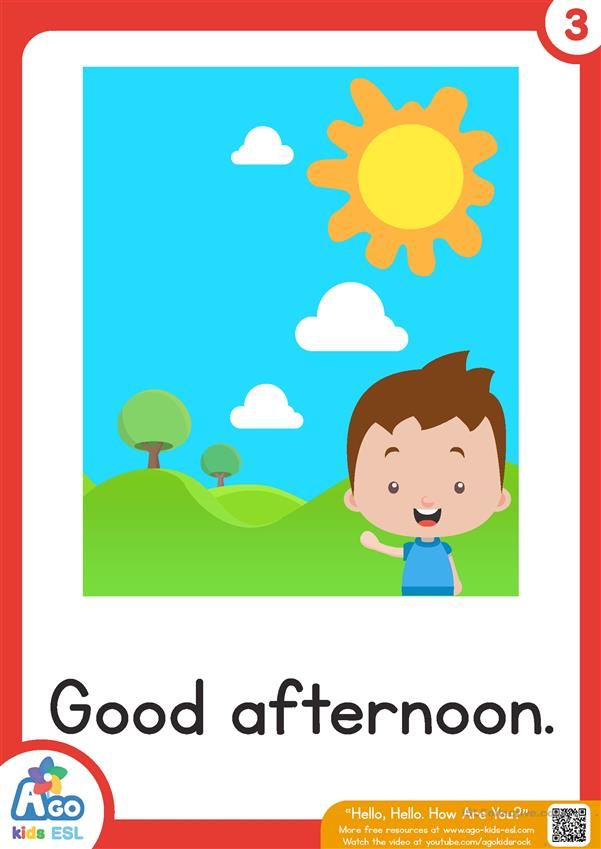 In fact, it can be difficult to find even ten or twenty minutes to exercise or drink a cup of coffee.
In fact, it can be difficult to find even ten or twenty minutes to exercise or drink a cup of coffee.
But think about how morning meditation can turn your whole day around. The effect is huge, especially if it stacks over time. Therefore, devoting even 5 minutes on a busy morning is worth it. nine0003
Meditation tools and space
Try to practice in a quiet, peaceful place, such as your bedroom. If you plan to sit on the floor, sit on a rug or rug, or use a yoga mat. Optionally, you can use a yoga pillow or a firm pillow.
As for other tools, you can use a timer to keep track of sessions, and some people use a meditation bell to sound the start and end of meditation. nine0003
Meditation Posture
Sit comfortably on the floor with your lower body on the edge of a firm cushion or meditation cushion. The knees should be below the hips. Place your hands gently on your knees or on your knees, palms up. Close your eyes or look down about 5-10 feet in front of you.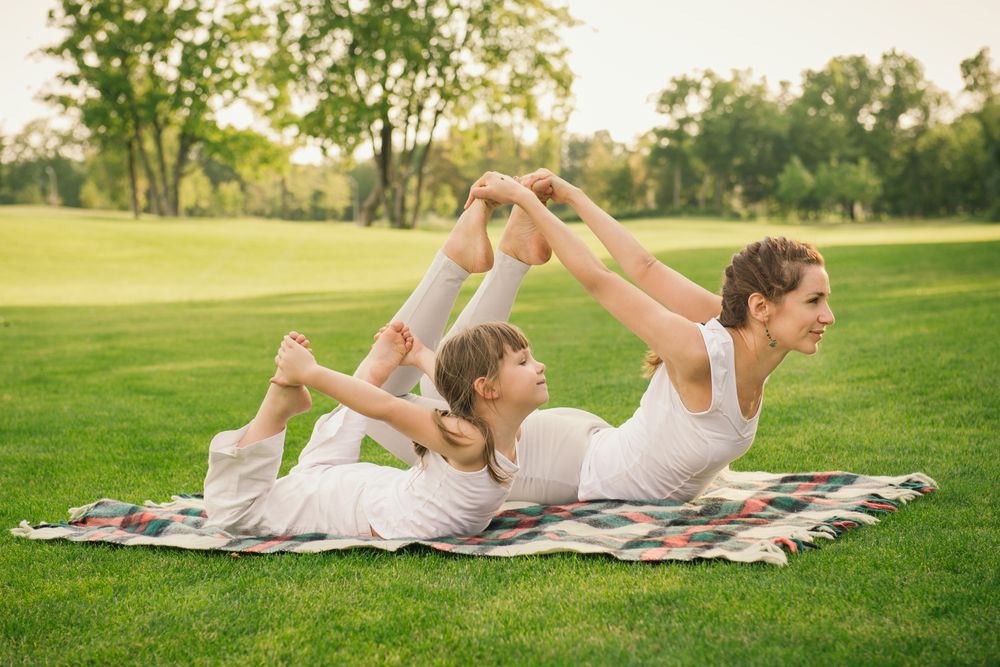 Keep your back straight and straight. As you practice, your posture may change - this is normal, but don't be afraid to pay attention to it and correct yourself.
Keep your back straight and straight. As you practice, your posture may change - this is normal, but don't be afraid to pay attention to it and correct yourself.
Troubleshooting
If you find it difficult to start meditating and figure out what to do during a session, consider guided meditation. You can easily find five and ten minute guided meditation tracks online.
However, if you decide to act on your own, keep two things in mind:
First, think about your breathing. When in doubt, focus on the breath that goes in and out of the mouth, airways, and lungs. Watching your breath and inhale is a great way to find and maintain concentration. nine0003
Next, when you think, feel, or have emotions, try not to let those thoughts, feelings, or emotions run after you. Simply nod and smile at the experience and return to focusing on the breath and breathing technique.
How long should I exercise?
The best way to create a morning meditation plan that you stick to is to take your time. If you are just starting out, then the 5-minute meditation is a great option! This alone will change your life for the better. nine0003
If you are just starting out, then the 5-minute meditation is a great option! This alone will change your life for the better. nine0003
Once you get used to waking up and doing 5 minutes of meditation in the morning, you can move on to 10 minutes of meditation and eventually practice for longer periods of time, up to 1 hour if time permits.
Morning Meditation: Frequently Asked Questions
Should you meditate when you wake up?
Yes! Self-directed or guided morning meditation can have a profound effect on your life. nine0003
In the morning, when you are most fresh and your mind is most clear, quiet meditation will have the greatest effect. Starting the morning with meditation is an opportunity to achieve daily awareness.
By centering your mind and releasing tension immediately, you set yourself up for success and clarity throughout the day.
How to meditate lying down?
Some people prefer to start the practice of calming meditation while still in bed. This may be ok if you are just starting out. Just don't fall asleep if you have to get up for school or work! nine0003
This may be ok if you are just starting out. Just don't fall asleep if you have to get up for school or work! nine0003
If you have trouble falling asleep at night, you may also find it helpful to lie down for simple meditation.
Remember to maintain a purposeful position when lying down. Try this:
-
Lie on your back
-
Keep your feet hip-distance apart or more
-
Put your hands at your sides
-
Relax your body completely
How does meditation affect the brain? nine0055
Even meditation for beginners can have a profound effect on the brain.
First, meditation slows down activity on the default mode network4 or DMN. This is the area of the brain where self-reference takes place. If you have ever found yourself having a "wandering mind", the DMN is also the culprit.
Further, studies have shown that consistent meditation on stress and anxiety significantly reduces both.

